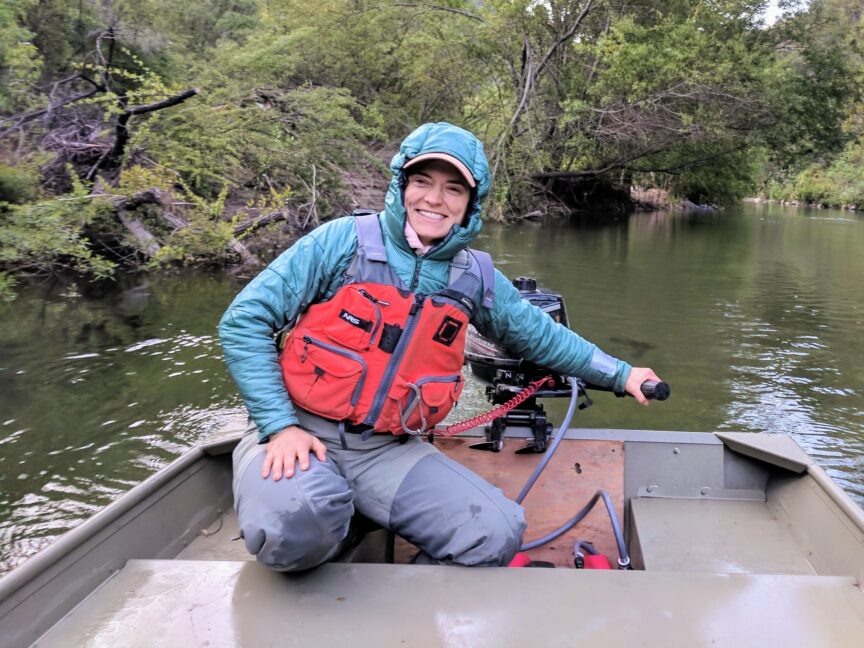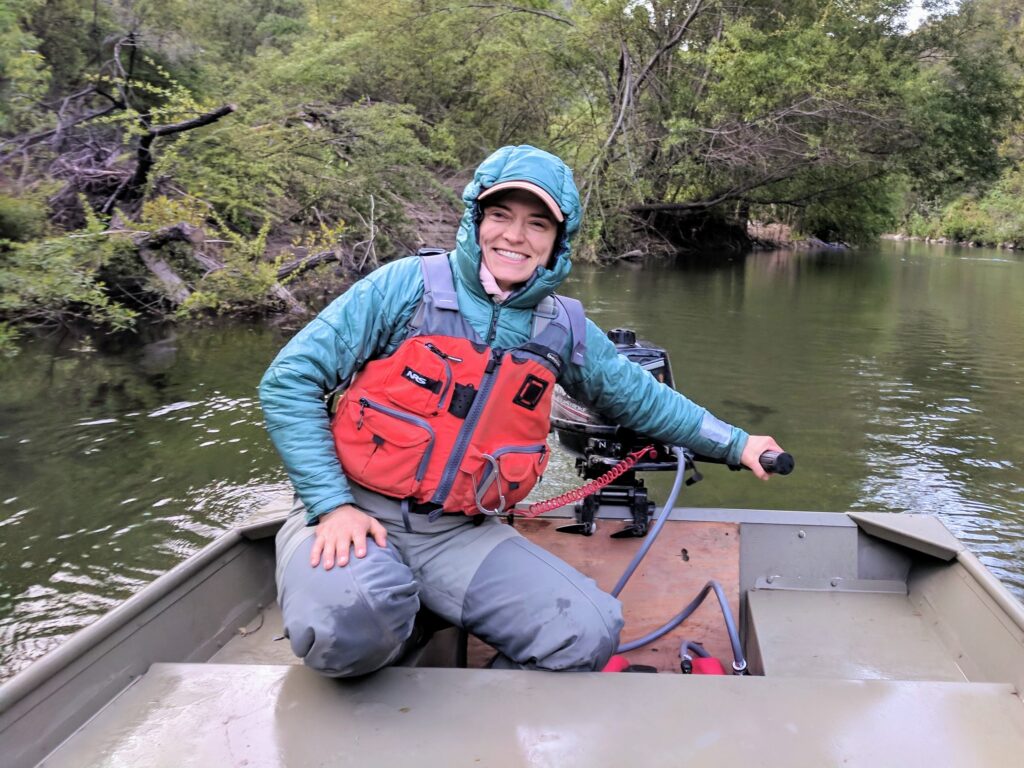
This week we’re highlighting the newest addition to the Wild Steelheaders United team, Haley Ohms. Haley is a Salmon Biologist with Trout Unlimited’s Science Team. Her position involves identifying, designing and participating in strategic research; advising TU staff and partners on science relevant to anadromous species conservation; synthesizing scientific information to advance TU’s conservation priorities; and providing input to federal and state agencies on management and conservation.
Haley’s current work includes a research project assessing how hatchery management affects wild fish populations using a genetic model, advocating for funding the reintroduction and monitoring plans in the Klamath River, and participating in the Columbia Basin Partnership blocked areas and science integration work groups to ensure that CBP goals are met.
Hometown:
I am originally from Anchorage, Alaska, and I currently live in Walla Walla, Washington.
Home waters:
The Kenai, Russian, Kasilof rivers feel the most like home.
Favorite way to catch steelhead (gear, fly, etc.)?
I’m not that picky – I just like being out. I guess if I had to choose a method of the moment it would be snorkeling; I really enjoy swimming with fish and watching them in their element.
Boat or hike? Why?
Boat. I love boating. I’m also short and not particularly good at casting, so the boat makes fishing and traveling on the river much easier.
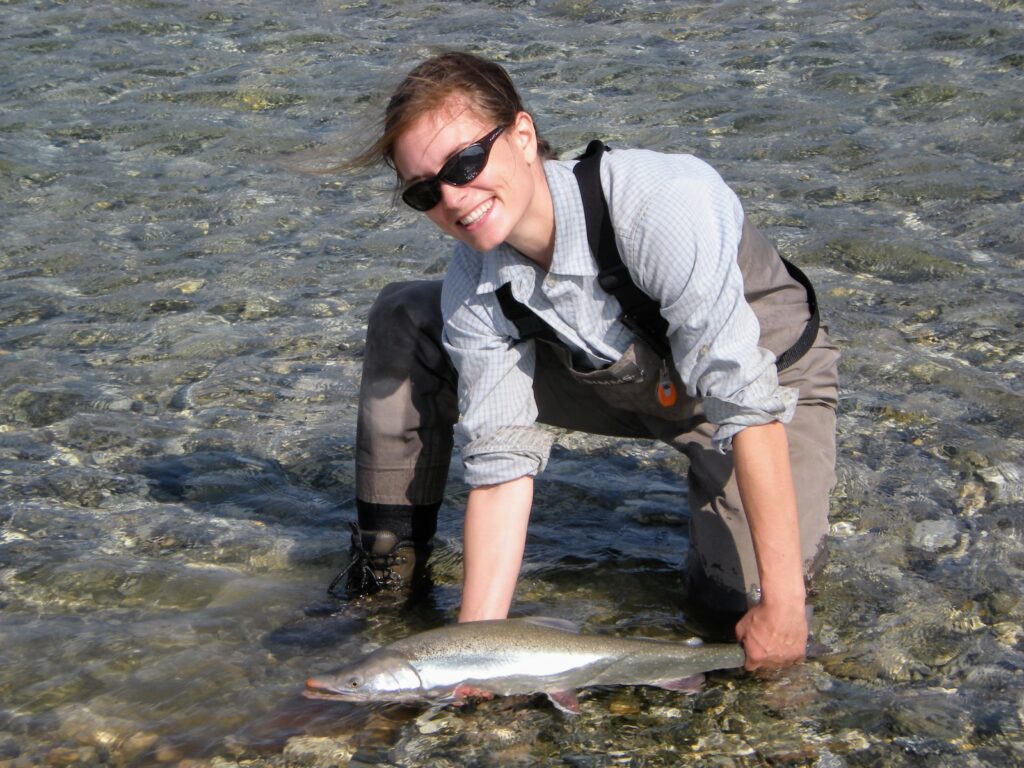
First steelhead you ever caught?
The first steelhead I ever ‘caught’ was at a weir on the Funny River (a tributary of the Kenai River). I was working for the Fish and Wildlife Service, and we had several weirs on the Kenai Peninsula. My first steelhead on a fly was in the lower Kasilof. We hopped out there after work one day, it was freezing and terrible weather, but I brought this beautiful silver fish in from the depths, and it was a huge kick.
Most memorable steelhead camp?
A fall steelhead camp on the Deschutes. It was my first time fishing with a spey rod, my first time fishing in warm weather, and my first time visiting central Oregon. I remember being skeptical of fishing in the lower-48, but it was so beautiful and peaceful, and it won me over. The fly of the trip was the ‘home-made tattoo’ after some characters camping next to us – that name still makes me laugh.
What’s your favorite thing about wild steelhead?
They don’t give up their secrets easily and they demand respect.
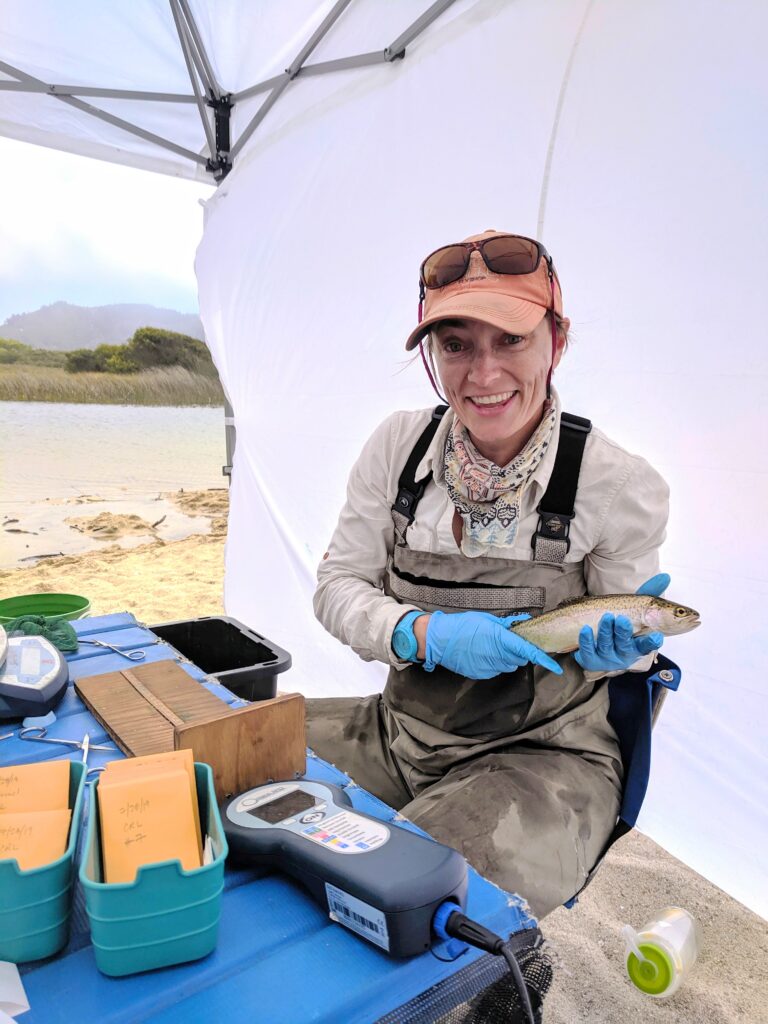
Other hobbies or passions besides wild steelhead?
I enjoy biking and try to get around by bike as much as I can – including with my 6-year-old on the back of my cargo bike. I am learning Spanish, and I’m into sewing clothing. I am also renovating my house that was built in 1907, and despite feeling like I’m living in an episode of “This Old House,” I am (mostly) enjoying it.
Tell us about your career before joining TU:
I have worked on salmon and steelhead topics throughout the west coast (and in Japan for a brief period) for the last 20 years. My first job was working for the Alaska Department of Fish and Game counting fish on the Egegik River (in Bristol Bay). From there, I had a variety of fishy field jobs in Bristol Bay, the North Slope, and Southcentral Alaska.
I made my way to the Lower-48 by way of graduate school. I completed a Masters and PhD at Oregon State University. My dissertation focused on the ecology and evolution of life history diversity in steelhead and other fishes.
Most recently, I oversaw a research program on Carmel River steelhead while working for the NOAA Southwest Fisheries Science Center and the University of California Santa Cruz.
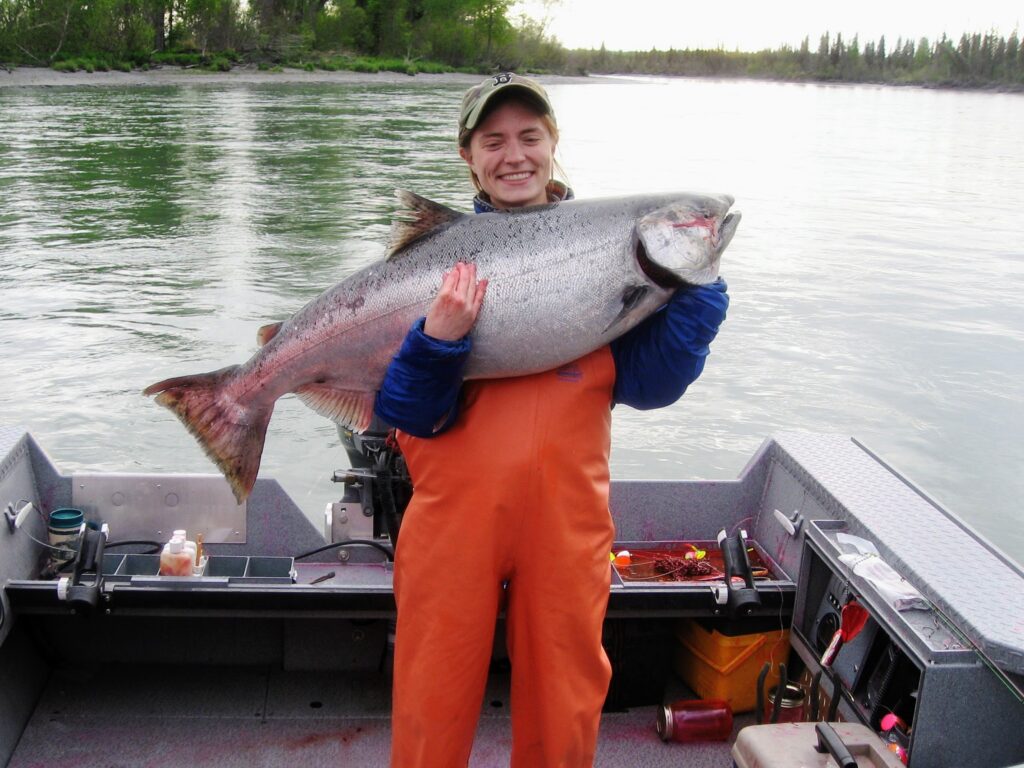
When you think of the future of wild steelhead, what gives you a sense of hope? What makes you concerned or worried?
I have a lot of concern that many wild steelhead populations are teetering on the edge of extirpation, and that I will see the loss of some populations in my lifetime. I know that is dark, but it feels very real to me. I am overwhelmed and disheartened by how fast our society is overtaxing resources like water, how we continue to expand our footprint into sensitive areas, such as floodplains, and our reluctance to tackle the big problems now and instead putting them on the shoulders of future generations.
With that said, I have been astounded by how persistent steelhead and rainbow trout can be. My hope is that resilience will buy us enough time to fix our mistakes. I also draw a lot of hope and inspiration from the fishing, tribal, and conservation communities that continue to fight for steelhead. The passion and determination of people in these communities makes me believe that wild steelhead will have a place in the future.
Anything else you want supporters of Wild Steelheaders United and TU to know?
I am so grateful to Wild Steelheaders and TU supporters and just want to say THANK YOU for their support. We could not do this important work without them. Their passion for steelhead is infectious and motivates me to keep at it.


